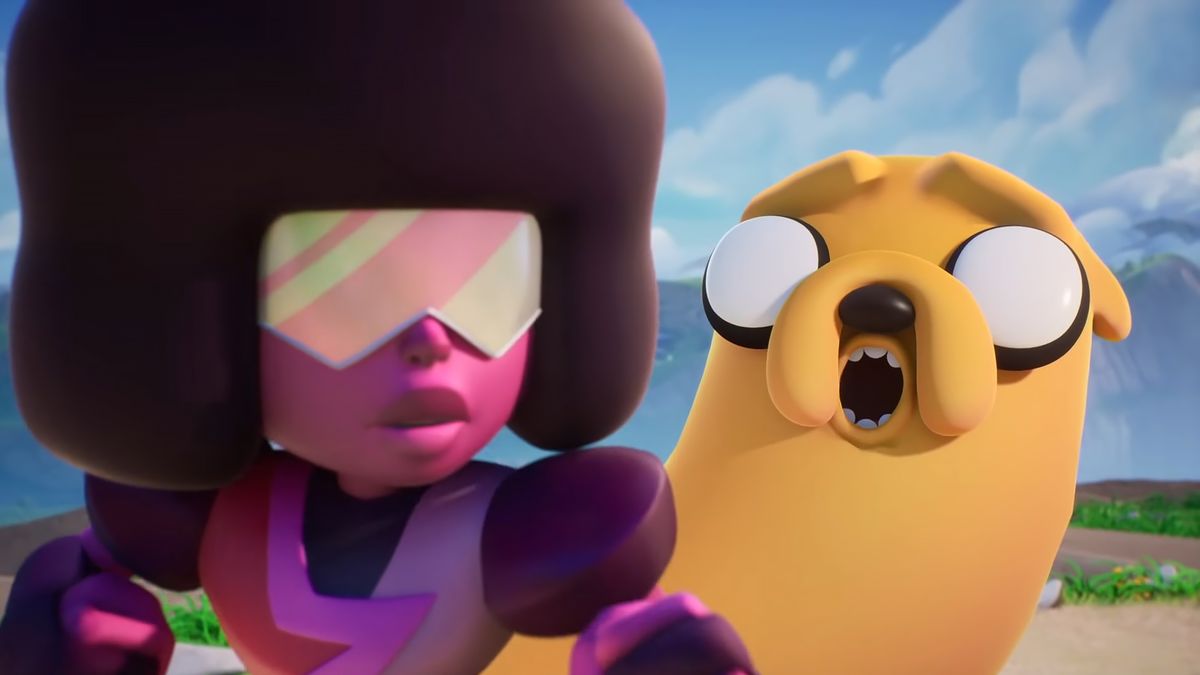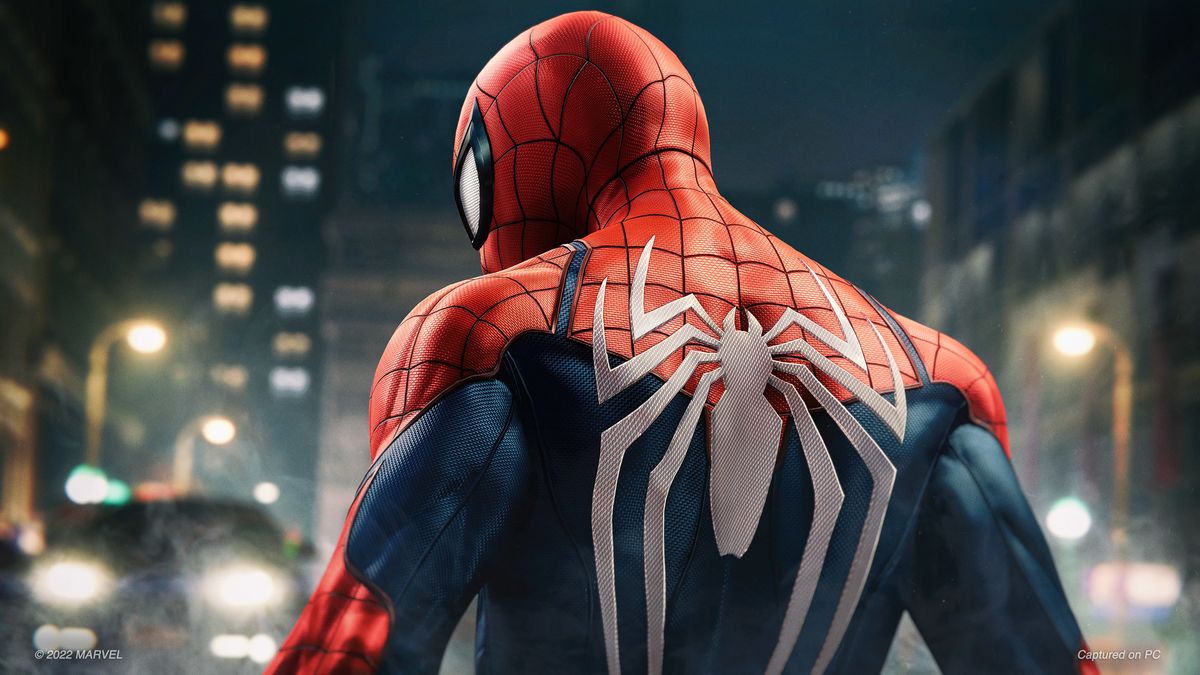This article was originally published for the Multiversus alpha preview in May. The free-to-play game’s closed beta is now available for anyone that participated in the alpha, anyone that buys a Founder’s Pack on Steam, or anyone that watches an hour of a drops-enabled Twitch streamer. The current beta includes the Iron Giant and will become open for everyone on July 26. Given that there’s no final release date and it seems unlikely that the open beta will end before it officially comes out, we’ve republished our five hour impressions below.
Original story:
If Fortnite and TikTok have taught me anything, it’s that when vastly different brands and pop culture icons collide with each other it can be both dissonant and legitimately rad. MultiVersus, which is a clever and haunting title for a mash-up free-to-play fighting game, recognizes this. It’s like scrolling through my For You page where in one clip someone tries to argue that Shrek is hot, actually, and in the next, a Batman knock-off jokingly paralyzes someone for a parking ticket.
The same surreal, oddly appealing disharmony hits in MultiVersus when I’m Wonder Woman launching my knee into Ultra Instinct Shaggy’s chest so that my teammate, Finn from Adventure Time, can get a swipe or two in. MultiVersus is Smash Bros. if Arya Stark was in it, except when she steals someone’s face, the game can only imply the horror of what just happened behind its E for everyone presentation. Like Nintendo’s brawler, MultiVersus is a frenetic fighter that takes place on colorful 2D stages plucked from iconic Warner Bros. hangouts like the Bat Cave, and the goal is to kick your opponents into outer space.
MultiVersus gathers up its iconic characters, including Superman, Bugs Bunny, Steven Universe, Harley Quinn, the Iron Giant (for some reason), and more in the hopes that it’ll grab the attention of people who, like me, haven’t touched a platform fighter in years. I dabbled in Super Smash Bros. as much as any 15-year-old did. I tapped buttons to make Zelda fling Toon Link off the map; I had no idea what the combos or strategies were. But now, 14 years and 3,000 hours of Overwatch later, I can see exactly how MultiVersus wants me to play it.
The game’s roster is split up into roles: assassin, ranged, bruiser, tank, and support. Everyone can throw a punch, but each character specializes in a combat style that synergizes with an ally in its 2v2 format. Reindog, a support character that’s actually unique to MultiVersus, can attach a beam to an ally to both save them from falling off the stage and enable them to play aggressively as they try to do that to someone else. Wonder Woman, who I played the most, is a tank that thrives off of shielding damage and knocking enemies back.
Like heroes in Overwatch, your role determines the pace of combat. If you want to stay back and look for opportunities to join the fray, support is the answer. Brawlers, on the other hand, are built to turn a fight in their favor with attacks that send enemies flying upward that you can follow up on with aerial moves. It’s surprisingly tactical and more focused than your average round of Smash Bros., but this strategic layer only works within the context of a three-round match played against a team that is also trying to deploy the same tactics.
I played a game with a hyper aggressive Velma that kept taking way too much damage before I could catch up and help as Wonder Woman. After a lost round, I decided to try to match her speed and shield bash my way in front of her to take the damage myself, knowing that if things got rough I could trust myself to play evasively for a bit. That quick ability to read how a game is playing out is exactly the kind of instinctual strategy and teamwork (for all I know the Velma was aggressive to make up for my initial passiveness) that MultiVersus promotes. If things got really rough, I know in the next round I could have swapped in a few stat-altering perks (like damage and movement speed boosts) or changed characters entirely to counter the enemy duo.
MultiVersus hooked me much like Overwatch circa 2016 did as a game that appears to be a simple brawler but ends up feeling a lot more like Chess, and the multiversal roster is exceptionally creative. Tom and Jerry are a two-in-one duo like Smash’s Ice Climbers. For a basic attack animation, Tom sends his fist flying toward Jerry. The mouse ducks and Tom’s punch flies over his head and slams into his opponent. That Hanna Barbera attitude, which underlines the playfulness and mayhem in a bunch of cartoon characters beating the snot out of each other, is everywhere in MultiVersus. It gives the entire game a loose, but important, consistency, and has me eager to spend hours with everyone on the roster so far. If you’re not a fan of its colorful sheen—which is unabashedly Fortnite—you probably won’t be swayed by anything in MultiVersus. It’s a game that requires you to take that leap and bask in its absurdity.
At launch, MultiVersus will have a battle pass and a quest system that rewards you for playing different characters and honing your skills on a few in particular. Game director Tony Huynh promised me that, despite plans for a premium store, purchases will be limited to cosmetics like skins, icons, and emotes. You can earn most of these things through normal play, and it was neat to show off my expertise, however brief, with Wonder Woman to the lobby on the victory screen. MultiVersus might be a competitive game with a significant amount of depth, but it’s also a game interested in letting you express yourself with a variety of fun options.
MultiVersus isn’t a mindblowing idea for a game—on its face, it’s very similar to the recent and kind of terrible Nickelodeon fighting game from last year. Disney is already tapped into the multiverse as a concept to canonize literally anything it wants to as its grip on our literal universe tightens. Your favorite YouTube videos and memes are being turned into NFTs. Chris Pratt is going to voice Mario. That’s the state of consuming media in 2022: everything is everywhere all at once.
But what often happens in crossovers like MultiVersus is a dilution of meaning and an obsession with reference. MultiVersus deploys its unmistakable characters as a trojan horse for a game that’s actually more interested in the intricate dance of an expertly made fighting game made for people who aren’t already obsessed with fighting games. If you’re going to hit me over the head with brands and popular characters, you might as well do it for something I actually want to play. And it seems to be working, because all I really want right now is more MultiVersus.


